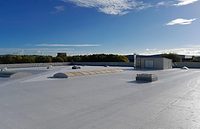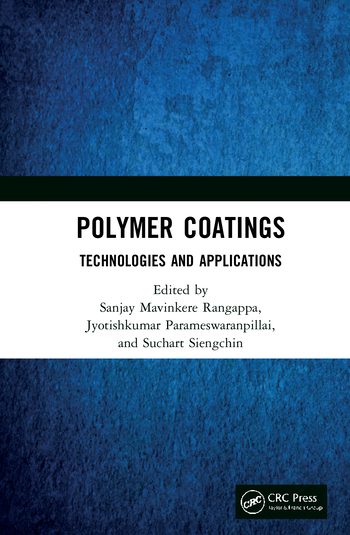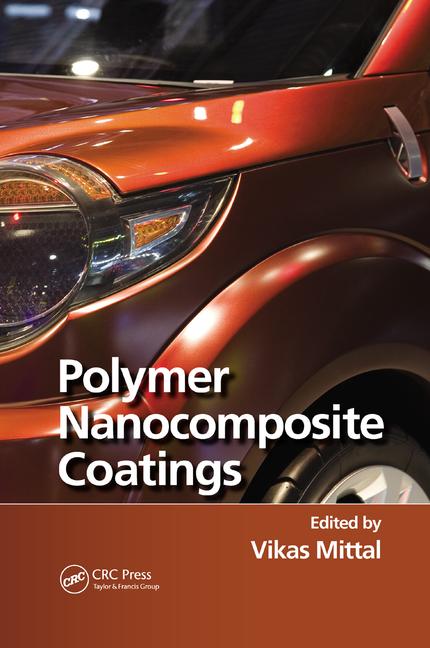New White Pigments Ideal for Cool Roof Coatings
Benefits Include Enhanced Aesthetics and Improved Economics

The Holy Grail of product development combines cost savings and improved product performance. Recently, considerable development work has been conducted to demonstrate the enhanced performance and improved economics associated with new and novel white pigment offerings. In this article, we will highlight a new white pigment that is showing great promise at reducing the amount of titanium dioxide needed to formulate cool roof coatings while enhancing performance, processability, and affordability.
Economics
Reliable global supply chains of key ingredients have become brittle and broken by competing tariffs, recurring virus outbreaks, and even by war. This has definitely been the case for the supply of titanium dioxide (TiO2), which is used in numerous applications from sunscreen and paint, to countertops and paper applications, and cool roof coatings. Even though this extremely important global commodity is serviced by several multi-billion-dollar manufacturers, the supply of titanium dioxide has become volatile over the last few years, resulting in more supply uncertainty and instability in pricing.
The introduction of new white pigments can improve the affordability of many cool roof formulations. For example, many white pigments can be significantly lower in cost on a weight basis, if not almost half the cost on a volume basis, since titanium dioxide has a very high density. Other impactful savings can occur when white minerals are produced domestically, thus eliminating unpredictable global shipping fees, as well as additional costs associated with excess inventory. When added together, lower weight cost plus volume advantage plus lower logistics costs should offer a more affordable white pigment alternative to materials like titanium dioxide.
The Need for ‘Cool’ Roofing Products
The construction and building products industries have to address the urban heat island (UHI) effect – areas where surface and/or air temperatures are higher than surrounding areas. A UHI forms in an area with:
- Dark, impervious surfaces (e.g., roofs, walls, industrial areas and roads)
- Relative lack of vegetation and tree canopy
- Buildings that block or slow air movement and trap solar and thermal radiation
- Vehicles and air conditioning units that release waste heat1
Increasing the solar reflectivity of roofs is a cost-effective means of reducing building energy demands and mitigating urban heat islands. Application of a “cool” surface to the top of a building with a solar-reflective coating is a popular mitigation strategy for building owners. These “cool” surfaces reflect more of the sun’s energy, resulting in lower building surface temperatures. Evidence has shown that increasing the solar reflectivity of buildings results in an average surface temperature reduction of more than 10 °F, and a corresponding air temperature reduction of up to 1 °F. Each degree of cooling leads to increased thermal comfort, health, and economic benefits.2
The market for liquid-applied cool roof coatings is measured in millions of squares and continues to expand at levels beyond typical construction growth rates. Elements driving the growth of liquid-applied roof coatings include the need for moderately priced options for re-roofing existing structures and evolving building energy regulations for new construction.
Cool roof coatings are highly engineered coatings for flat or low-slope roofs. The use of these coatings is mandated by state and local governments. The Cool Roof Rating Council (CRRC), a 501(c)(3) non-profit organization that develops fair, accurate, and credible methods for evaluating and labeling the radiative properties of roofing and exterior wall products, maintains a database to certify the performance of these coatings.3 To be considered a cool roof coating, the product must meet rigorous criteria for maximizing solar reflectivity and minimizing heat transfer specified in regulations and evaluated using the CRRC methodology.
A fluid-applied cool roof product is typically 20 mil or greater thickness and contains resins, solvent, pigments, and various additives. Upon application to the substrate, such as a roof, the solvent evaporates, the resin polymerizes, and the pigments become bonded with the polymer. The pigments are the functional, solar-reflecting part of the coating system. A preferred solar-reflecting pigment is titanium dioxide (TiO2). A popular choice for many formulators, titanium dioxide exhibits excellent light scattering and infrared reflectance due to its high refractive index.4 However, titanium dioxide has demonstrated pricing volatility over the past 20 years. Due to this economic and supply volatility, many formulators have sought ways to reduce titanium dioxide usage with the addition of pigment fillers and other extenders. In some cases, the alternative pigment fillers/extenders do not reflect solar radiation and only enhance performance by properly separating the titanium dioxide pigment particles.
Recently, cool roof formulation development has focused on a particularly well-suited mineral pigment from U.S. Silica called EverWhite® pigment. This product, tested in the study, is a highly refined silica-based mineral that can be used in paint and surface coatings. The new advanced pigment is formed at elevated temperatures, and the industrial process includes re-crystallization from quartz, purification, and milling. Modern milling techniques produce a variety of products with (d50) mean particle sizes ranging from 0.6 to 4 microns. Table 1 shows the particle size distribution and whiteness value for the three most common new white mineral pigment grades (there are numerous products in the product line).

To begin, the new mineral pigments were evaluated in a waterborne, acrylic elastomeric cool roof coating. Iterations of the coating formulation were developed to study a control without extenders, various common extenders, and extender combinations, as well as manipulated pigment volume concentrations to determine optimal effectiveness and attributes.
Cool roof coatings are tested using procedures in ASTM D 6083-97a. As with other coating formulations, the specified properties include viscosity, volume solids, weight solids, elongation, tensile strength, accelerated weathering, permeance, water swelling, adhesion, fungi, tear resistance, and flexibility. There is a unique focus on solar reflectance and thermal resistance when testing a coating to be “cool.”
Surface chemistry considerations are particularly important during cool roof formulation development. In the case of EverWhite pigment*, it has more beneficial particle size and zeta potential compared to most common fillers. Surface chemistry of the milled mineral is well suited for coatings with an isoelectric point of ~2.2 and zeta potential at pH 8.5 of ~[-45mV].
The pigment technology gives benefits, not only in the effectiveness of the applied coating, but also during manufacturing. During coating manufacturing, studies revealed equal pigment loading time, equal pigment wet-out time, and equal pigment grind time when substituting the new white mineral pigments for a portion of titanium dioxide. Furthermore, manufacturing energy requirements and Hegman grind times are equivalent.
Formulation variables tested during the study include:
- Control formulation with no replacement of current white pigment (TiO2)
- 12.5 wt% replacement of TiO2 with EWP-5
- 25 wt% replacement of TiO2 with EWP-5
- 50 wt% replacement of TiO2 with EWP-5
Coatings properties, including in-can stability, dry time, water swelling, and dirt pick-up, were evaluated and found to be equal to the control at all replacement levels.
Viscosity
Other key experimental results determined that the use of the new white pigment reduces viscosity, transparency is slightly affected, abrasion resistance is maintained, and weathering resistance is favorable relative to other extenders. The data in Tables 2 and 3 reveal that by substituting the new white pigment (EWP) for the current white pigment (titanium dioxide, TiO2), a significant reduction in viscosity is realized. Moreover, a formulation cost reduction is possible by adding EWP and reducing the dispersant by 35%.

Solar Reflectance/Color/Transparency
Figure 1 shows that solar reflectance is minimally affected by the pigment substitutions. At 12.5%, solar reflectance is slightly higher, and at 50% it is still well above the 82% minimum by regulation.

The CIELAB L* whiteness axis graph (Figure 2) shows that brightness increases at the 12.5% replacement level of EWP; at 25% replacement of titanium dioxide, the brightness is equal to the control coating, and at 50%, the L* value is 0.37 less. This difference is not visually detectable.
The transparency test method consists of drawing down the paint over a Leneta Chart (paper with black and white strip) and measuring the reflectance of the dried paint film in the white and black areas. The calculation sets the black area as the sample and the white area as the standard in the equation: sample minus standard. This experiment concludes there is no significant impact on transparency (Figure 3). CIELAB color values that are less than +/- 0.4 are not detectable to the observer.


Adhesion
Cross hatch adhesion measures a coating’s ability to adhere to the substrate. In this test, a 20-mil-wet (~10.5 mil dry) cool roof coating is applied to a primed aluminum panel, cured as per the specification, and scribed with the proper tool. Delamination is rated by the amount removed with adhesive tape application and subsequent removal. The cross hatch adhesion was equal amongst the ladder series sample set, as shown in Table 4.

Liquid-applied cool roof coatings are an exterior paint application. The substrates are either flat or low-slope roofs. This roof configuration is subject to intense solar radiation. The coating must withstand the sun’s radiation and other weather events. Functionally, all components of the applied coating play a role in weatherability.
In this study, the experimental ladder formulations were tested for weatherability at two locations, West Virginia and Arizona. The following graph is data for 105 days weathering at both test sites. Accelerated weathering was also evaluated by placing the samples in a QUV chamber for 1,000 hours and measuring elongation and abrasion.
Figure 4 reveals minimal color difference between the test coating without EverWhite pigment and the test coatings with the EverWhite pigment substitutions.

Table 5 shows tensile and elongation testing (before and after 1,000 hours of QUV) passed the ASTM requirement.

Conclusion
Several interesting discoveries can be concluded from the results above. The EverWhite pigment product line will reduce solar energy adsorption into the cool roof substrate, enhance coating performance based on particle dispersion and separation, and reduce overall cost of the formulation by replacing titanium dioxide with less costly EWP.
These EverWhite pigment products are available in several particle size distributions. There is ongoing experimentation to characterize other coatings properties for this project. Evaluations in other polymeric systems are in progress, e.g., epoxies, polyesters, rubber, cementitious, polyvinyl acetate, and other polymer systems. Titanium dioxide replacement in applications like quartz countertops, inks, flooring, roofing, walls, and other exterior coating applications also show promise.
*Patent pending
References
1 U.S. EPA, 2020. Learn About Heat Islands. https://www.epa.gov/heatislands/learn-about-heat-islands
2 Krayenhoff, E. S.; Broadbent, A.M.; Zhao, L., et al. (2021). Cooling hot cities: a systematic and critical review of the numerical modelling literature. Environmental Research Letters, 16, 053007.
3 Cool Roof Rating Council. (2023) https://coolroofs.org/
4 Hyde, D. (2007, August 1) Infrared Reflective Pigmentation Technologies and the Future of Coating, Part 2: The Science Behind Technology. Paint and Coatings Industry Magazine. https://www.pcimag.com/articles/87154-infrared-reflective-pigmentation-technologies-and-the-future-of-coatings-part-2-the-science-behind-the-technologyLooking for a reprint of this article?
From high-res PDFs to custom plaques, order your copy today!









